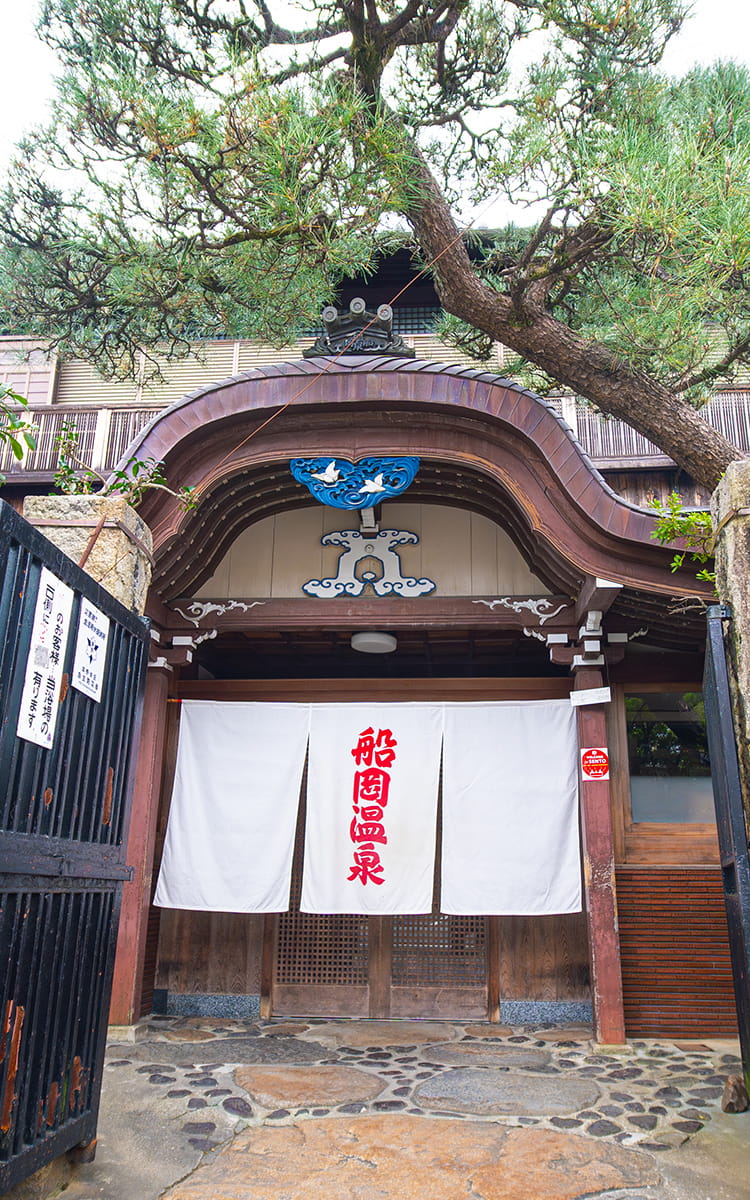
Overview
Funaoka Onsen is a historic bathhouse located in Murasakino Minami Funaoka-cho, Kita Ward, Kyoto. It stands at the foot of Mt. Funaoka, which offers panoramic views of Kyoto from its summit. What’s more, the many historical temples and shrines in the area give it a traditional Kyoto atmosphere.
The onsen’s origins trace back to 1923 when Matsunosuke Ono, the owner of a landscaping stone shop in Kamigamo, built the Funaoka-ro Inn and its attached bathhouse, Funaoka Onsen. In 1933, Matsunosuke’s son Goichiro installed Japan’s first denkiburo, an electric bath in which a slight electric current is applied for therapeutic purposes, in a bid to obtain the coveted title of “onsen” (typically signifying naturally occurring hot springs) as there were few in Kyoto at the time. Goichiro’s grandson Yoshio later recounted how his grandfather had repeatedly traveled by the Tsubame Express steam train from Kyoto Station to the Ministry of International Trade and Industry to obtain permission to operate under the name “Special Funaoka Onsen.”
The bathhouse was renovated into a reinforced concrete structure in 1932 shortly before the installation of the denkiburo, transforming it from an inn into a dedicated bathing facility. It began full-scale operation as a public bathhouse (or sento) after World War II in 1947, and it continues to serve in this capacity today. Funaoka Onsen is a national registered tangible cultural property and has been recognized as one of the “Buildings and Gardens that Make Kyoto Attractive” by the people of Kyoto Prefecture.
Go here to try out our digital metaverse content
Originally built as a bathhouse attached to the Funaoka-ro Inn, the first floor of this wooden building features a reception area in the front and changing rooms in the back, and the second floor consists of two tatami rooms. The framework for the building was raised in February 1923, while the gate with a karahafu gable that serves as the main entrance on Kuramaguchi Street was added in 1928. The onsen is now a beloved landmark for the local community.
The changing rooms are adorned with carved wood ranma transoms along all four walls and between the men’s and women’s sections. The east side is believed to feature motifs from the Aoi Matsuri and Kamo Kurabeuma Horse Racing Ritual, while the west side depicts the Imamiya Matsuri. Other points of interest include a ranma carving of the “Three Human Bombs” (a reference to the Shanghai Incident) and the changing room’s majolica tilework.
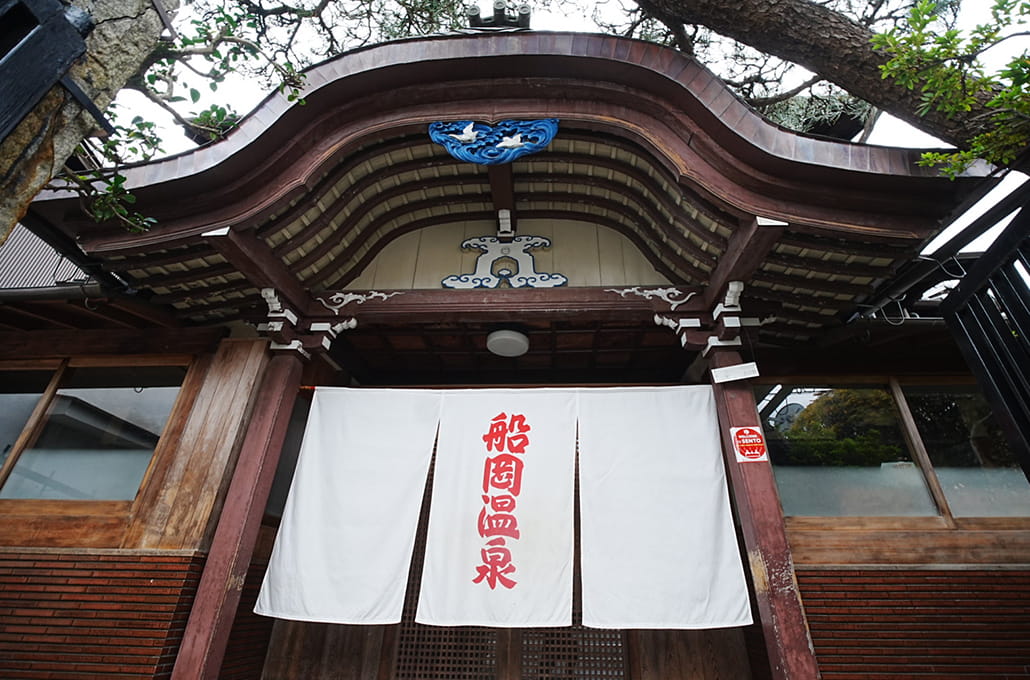
Karahafu gable entrance on Kurama Street
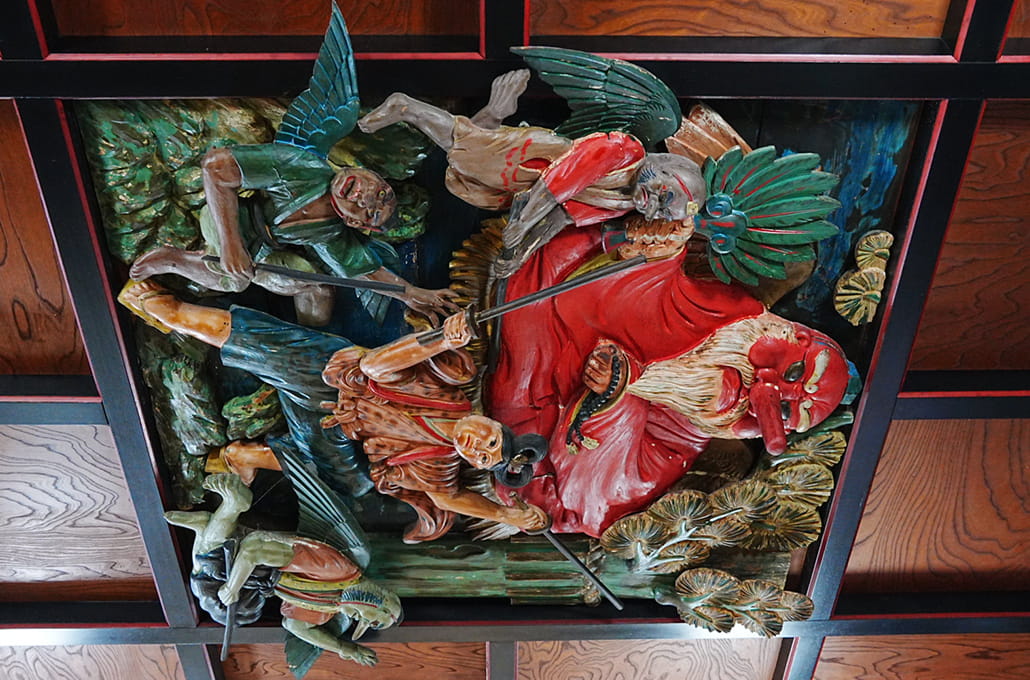
Kurama Tengu and Ushiwakamaru carving adorns the coffered ceiling
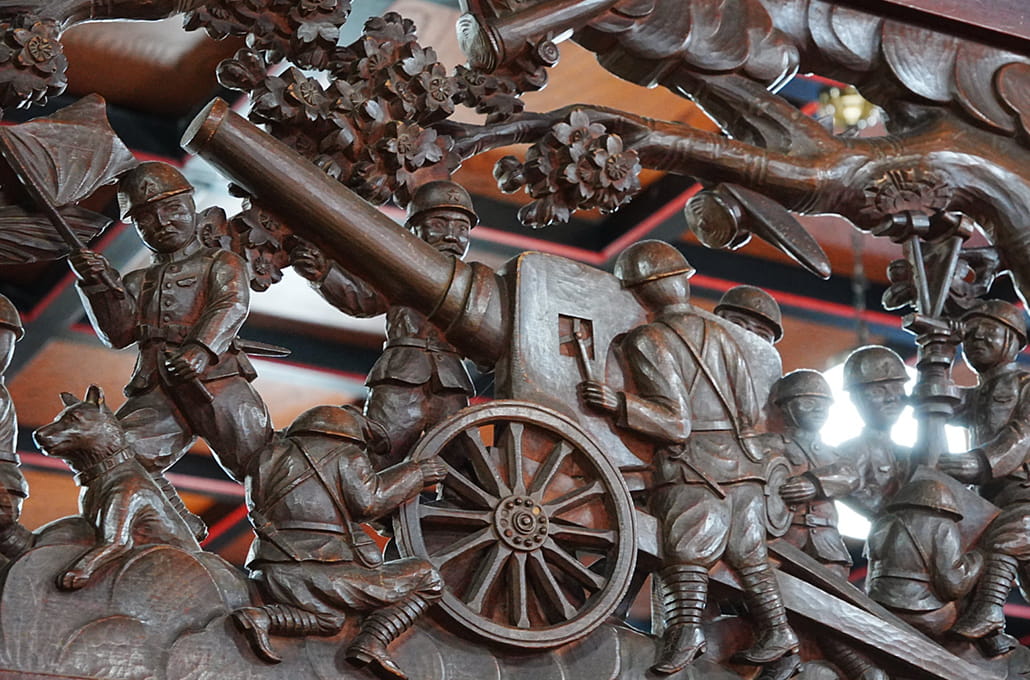
Ranma transom decorated with the carving of a military scene
The current bathhouse is a rebuilt version of the original brick structure. This single-story reinforced concrete building comprises changing rooms with corridors that lead to the separate bathing areas for men and women (the rear section was formerly the tadeba, or furnace area). Distinctive features include repurposed stone balustrades from Kikusui Bridge, which once stood at Senbon Kuramaguchi, and a raised skylight with round windows. The decorative tiles that adorn the interior also contribute to the bathhouse’s unique and charming aesthetic.
The bathing facilities are comprehensive, featuring Japan’s first government-approved electric bath (denkiburo), jet baths, an open-air bath, and a sauna.
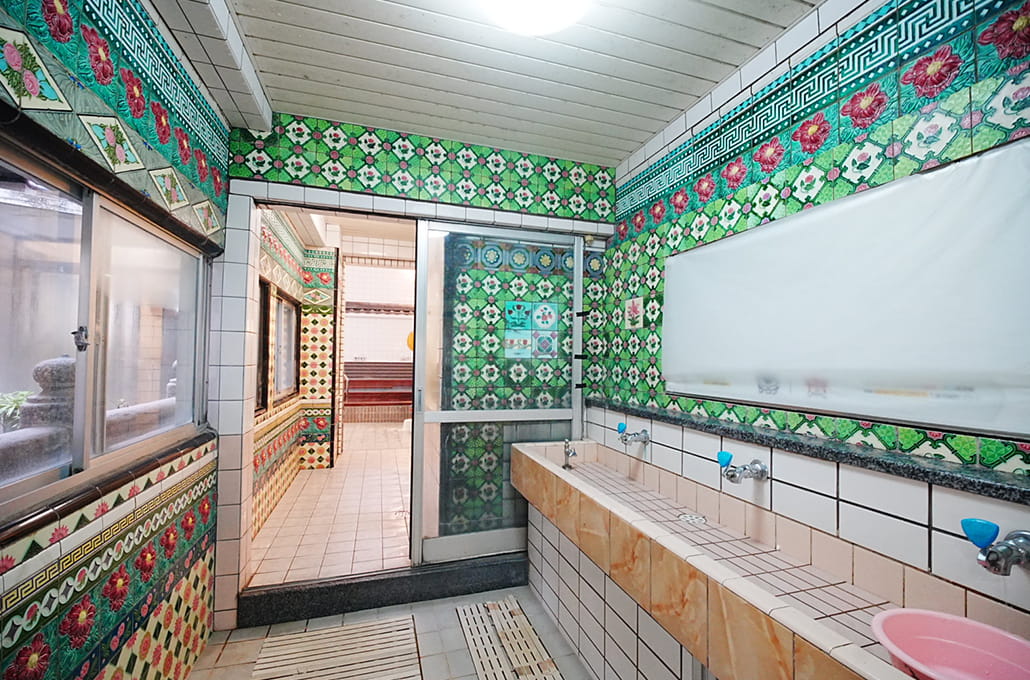
Hallway connecting bathing area and dressing room decorated in majolica tiles
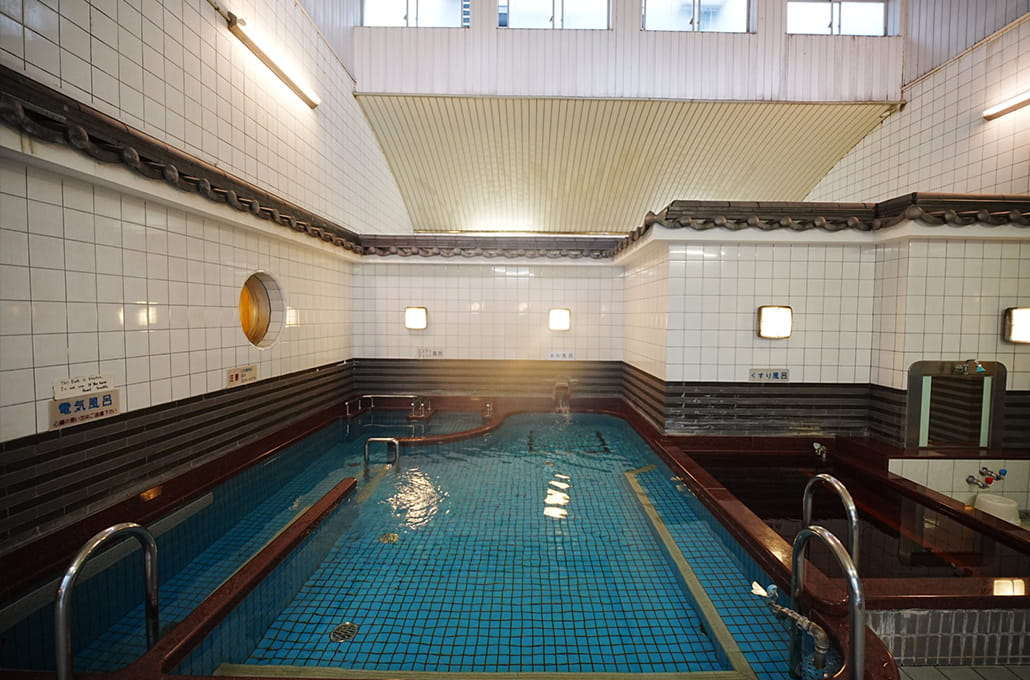
The bathhouse features various types of baths, including a denkiburo (electricity bath)
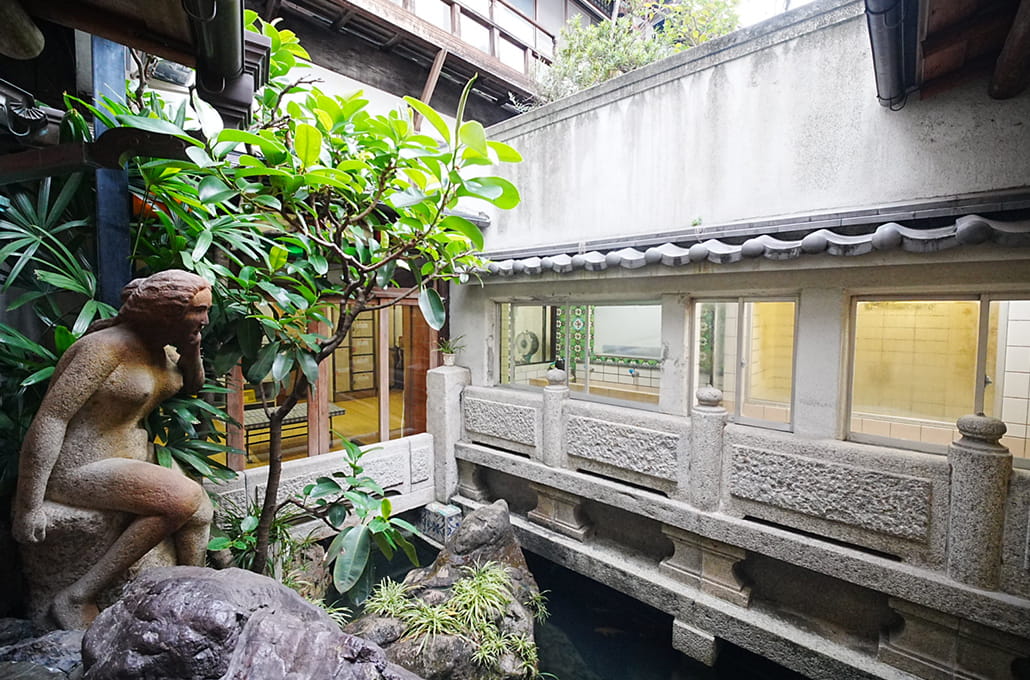
The stone railing was reused from Kikusui Bridge, which once stood at Senbon Kuramaguchi
Situated to the west of the bathhouse and changing rooms, this two-story wooden structure consists of an entrance, a main building, and a north wing. The first floor of the main building consists of smaller rooms, with a large hall located on the second floor. Meanwhile, the north wing contains tatami rooms on both the first and second floors. Although it lacks ornate decoration, the building retains the distinctive ambiance of a traditional Japanese inn, with design details incorporated into the guest room floors, shelving, and ranma transoms.

Funaoka-ro garden built by first-generation owner who had a passion for gardening
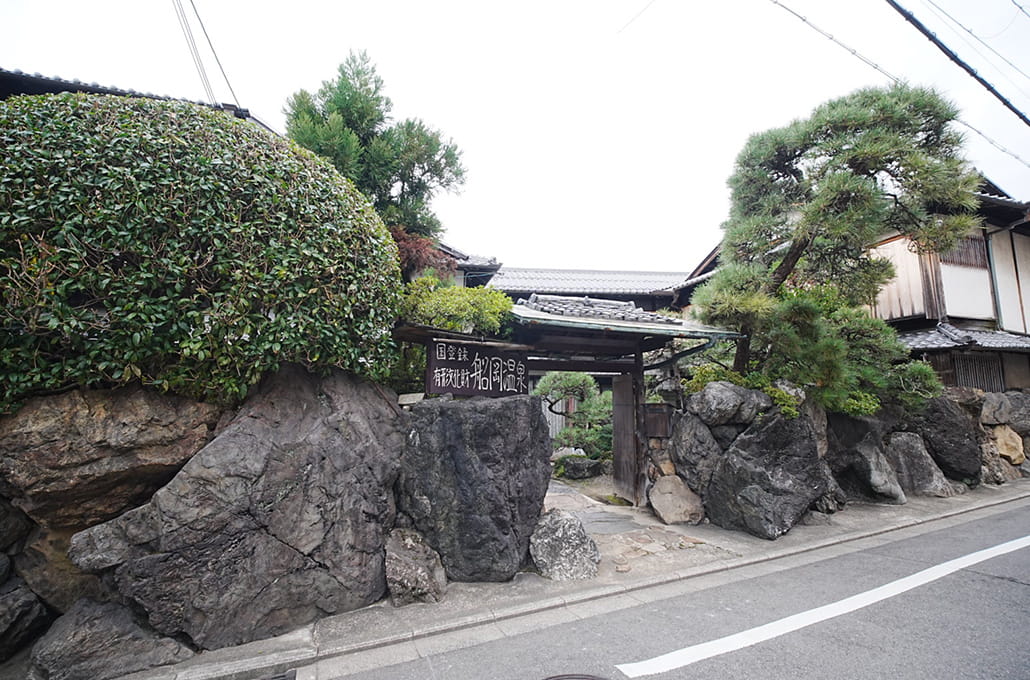
Exterior walls featuring extensive use of Kibune stone
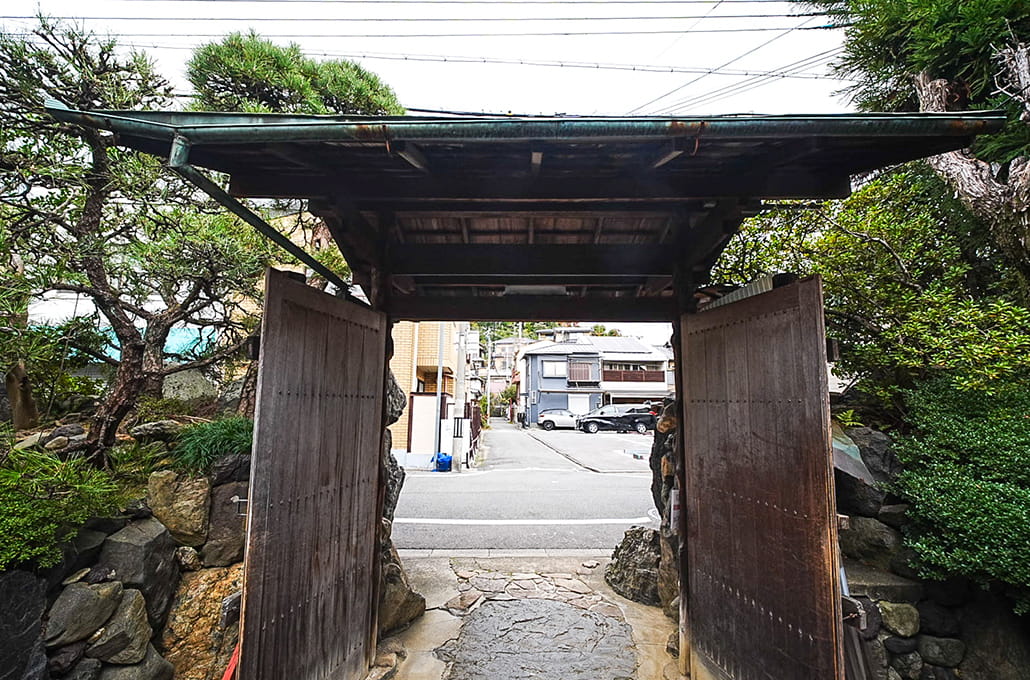
Copper panels cover part of the roof of the gate

令和6年度 文化資源活用事業費補助金(文化財多言語解説整備事業)